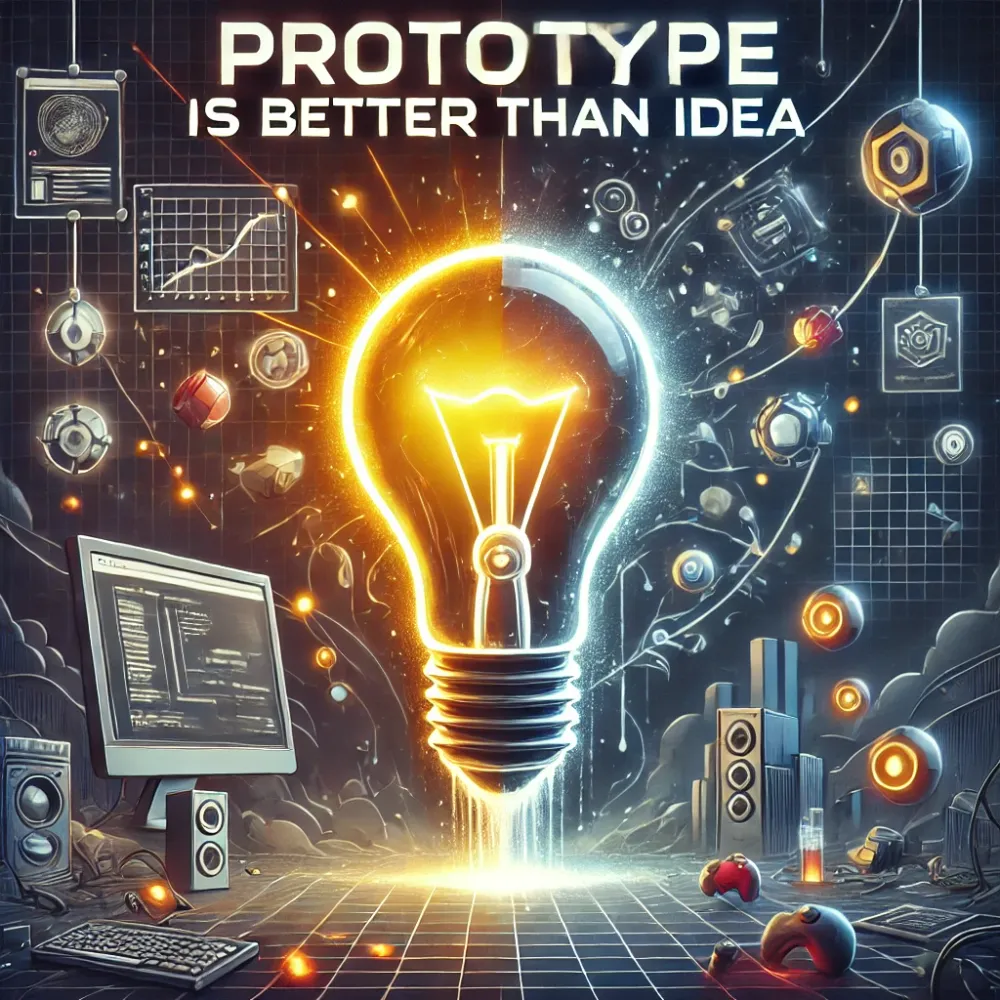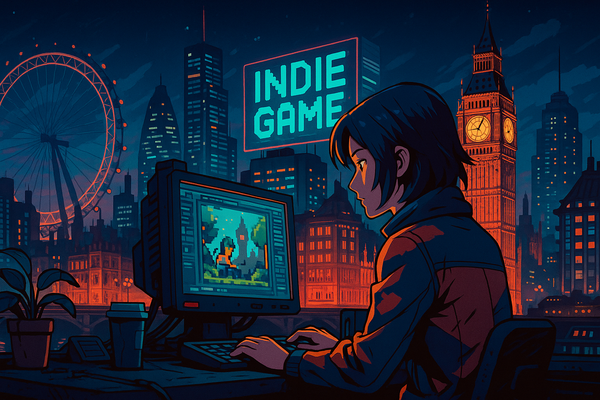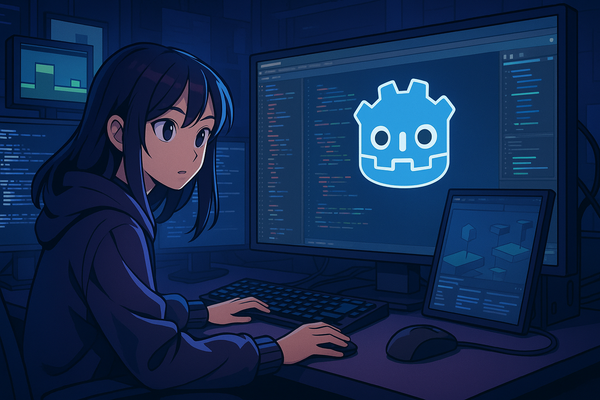Prototype is better than Idea: The imperative of prototyping in Indie Game development
In the world of indie game development, ideas are the seeds from which creativity springs. But while ideas are the genesis of all innovation, they are, in themselves, intangible, untested, and often, unreliable. The true power lies not in the idea but in its realization through prototyping. A prototype transforms the abstract into the tangible, providing the developer with critical insights, fostering iterative improvements, and paving the way for the success of the final product. Here, we delve into why a prototype is inherently more valuable than an idea, particularly in the delicate and intricate process of indie game development.
The Fallacy of the "Great Idea"
Every game starts with an idea—perhaps a unique mechanic, a compelling story, or a distinctive art style. However, the journey from idea to a successful indie game is fraught with challenges. Ideas, while exciting, are inherently speculative. They are shaped by the biases and limited perspectives of their creators, and without tangible manifestation, they remain susceptible to misinterpretation, overestimation, and misdirection.
Ideas are, by nature, fluid. They can evolve rapidly, which is both a strength and a weakness. Without the constraints of reality, an idea can become bloated, unfeasible, or simply lose its original charm as new elements are continuously added or modified. In essence, an idea is a hypothesis—a guess about what might be fun, engaging, or unique. But until it's tested, it's just that: a guess.
Prototyping: From Concept to Reality
A prototype, on the other hand, is the first real step towards bringing an idea to life. It is the bridge between concept and reality. Prototyping allows developers to transform their abstract ideas into a playable form, however rudimentary, and this process offers invaluable insights.
- Validation of Core Mechanics: The core mechanic is the heart of any game. Prototyping allows developers to test these mechanics in a real-world context. Does the game feel as fun as it sounded in the brainstorming session? Are the controls intuitive? Is the challenge balanced? A prototype provides answers to these critical questions, revealing flaws or confirming strengths that were not evident in the idea phase.
- Iterative Improvement: Game development is inherently iterative. A prototype offers a foundation upon which improvements can be made. Developers can experiment with different variables, tweak mechanics, or even pivot the entire concept based on feedback. This iterative process is impossible with an idea alone, as ideas lack the substance needed for detailed refinement.
- Early Feedback: A prototype, even in its most basic form, can be shared with others—team members, friends, or even potential players. Early feedback is crucial as it provides perspectives outside the development bubble. This feedback can highlight aspects that the developer may have overlooked, such as difficulty spikes, user interface issues, or narrative pacing problems. Moreover, it can also serve to validate the direction of the game, giving developers the confidence to proceed or the wisdom to adjust course.
- Resource Management: Indie developers often work with limited resources, both in terms of time and money. Prototyping allows for more efficient use of these resources. By focusing on developing a prototype first, developers can avoid investing heavily in an idea that may not work in practice. It’s far easier (and cheaper) to pivot or discard a concept at the prototype stage than after months of development.
- Team Alignment: In collaborative indie game development, it’s crucial for all team members to share a unified vision. A prototype serves as a concrete representation of that vision, ensuring that everyone is on the same page. It minimizes misunderstandings and aligns the team around a common goal. When everyone can see, play, and discuss the same prototype, communication becomes clearer, and collaborative creativity flourishes.
- Investor and Publisher Interest: For indie developers seeking funding or publishing deals, a prototype can be a game-changer. While ideas are easy to pitch, they are also easy to dismiss. A working prototype, however, demonstrates commitment, capability, and the potential of the game. It shows that the developer has moved beyond the idea stage and has something tangible that investors and publishers can evaluate. A prototype can turn a "maybe" into a "yes."
- Motivation and Momentum: Seeing an idea come to life through a prototype can be incredibly motivating. It’s a tangible milestone that can boost morale and maintain momentum. Every step of refinement and every piece of feedback brings the game closer to its final form, keeping the team engaged and driven.
The Prototype as a Living Document
One of the most profound benefits of a prototype is that it serves as a "living document" of the game’s evolution. Unlike static design documents or abstract ideas, a prototype evolves over time, capturing the history of the game’s development. This evolution is not just about refining gameplay but also about making crucial design decisions, solving unforeseen problems, and discovering new possibilities.
Through continuous iteration, the prototype becomes a repository of knowledge—a reference point for what works and what doesn’t. It allows developers to track progress, document decisions, and ensure that the final game is the best version it can be.
Conclusion: Prototyping is Non-Negotiable
In the competitive world of indie game development, where creativity and originality are paramount, the importance of moving beyond the idea stage to prototyping cannot be overstated. While ideas are the spark of innovation, they are also ephemeral and untested. A prototype, however, is a concrete step towards bringing that idea to fruition. It offers validation, facilitates improvement, garners feedback, and can even open doors to funding and collaboration.
For indie developers, embracing the prototyping process is not just advisable; it’s essential. It is the difference between a dream and reality, between speculation and certainty. In the end, the idea may be where the journey begins, but it is the prototype that charts the course to success.




